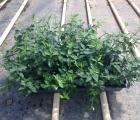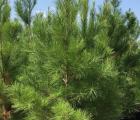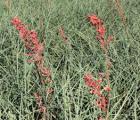'Little Red' Oleander
This oleander is deer and drought tolerant and can reach 6-12' tall. Blooms in the spring and early fall. Tolerant to high salt content soil, but prefers well drained soil. Water well and deeply the first year for root establishment, then it just needs average watering through the year. Low maintenance and evergreen, this oleander will add to any landscape.





